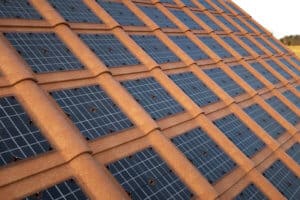From the invention of electricity, fuel has been needed. With more emphasis on green energy, how will solar technology impact our futures?
The story behind the solar technology: To think about it, Edison invented the electric bulb in 1879 which was produced commercially only in 1882 by the Edison Electric Illuminating Company of New York which lit up Manhattan.
This is when electricity came to be used. Soon after this, photovoltaic cells were built, tried and tested in 1883 by Charles Fritts. The thirst for energy grew and kept growing on a worldwide basis.
Gone were the PV cells and cheap electricity from dirty fuel – coal, was adopted. The pollution and the devastation to the environment, this dirty fuel and burning of petroleum would cause was inconceivable.
To date, 41% of electricity that is generated worldwide is from coal.
In some major cities of the world, the smog due to pollution from thermal power plants and vehicles is so heavy that breathing in those cities is equivalent to smoking at least 20 cigarettes a day.
The world finally came alive to the abuse of the environment and began to actualise photovoltaic cells for commercial generation of electricity in some significant way only in the 1980’s.
Making The Future
Fast-forward to today and the crisis levels we have reached have prompted many countries into seriously thinking green. And green it’ll have to be if any responsibility is to be shown for the young of today and the future generations.
Ironically, at the moment, it is the ‘third world’ countries that appear to be leading the way. The largest PV plant with a capacity of 2,050 megawatts is in India and the second largest with a capacity of 850MW is in China. The rest of the world is catching up.
Solar panels are made of silicon that is produced from the sand we mostly see at the beaches.
Silica in the sand contains a little over 46% silicon and the major cost of producing solar panels is, yes, electricity since silica has to be heated to over 2,000 degrees centigrade in arc furnaces.
The efficiency of solar panels is not bad at all at over 20% in most countries.
In layperson’s terms the efficiency of a PV cell or the solar panel is the percentage of solar energy that shines on the panel and is converted to electricity.
Each solar panel, depending on the manufacturer, produces between 360 to 400 watts of electricity.
Even though energy intensive to produce, photovoltaic cells are the cleanest source of green energy. Perhaps in the next decade or two it will be the energy from PV cells that will be used to manufacture PV cells.
Compelling circumstances and reasons for moving to PV cells are already there. The cost of producing solar panels, over the years, has come down quite drastically and the efficiency continues to go up. Let’s have a look at further advances being made in Photovoltaics.
Solar Films
Even though the efficiency of solar films is less than solar panels at 13%, the cost is also appreciably less. Solar films can be retrofitted on existing windows.
These are particularly useful for offices and tall buildings. Not only do the windows then produce electricity but the films also help insulate from harsh sunlight and protect the interiors of the buildings where they are fitted, from sun damage.
Solar Shingles
The efficiency here is from 15 to 20 percent. Solar shingles are particularly useful to those who are building a new roof or a new home. These are produced by several organisations now. Aesthetically too, they are not bad at all since they resemble traditional roof tiles.
Solar shingles are particularly useful to those who are building a new roof or a new home since the cost of these is higher by 25 to 30% compared with solar panels.
Perovskite Solar Technology
This is being heralded as the third generation solar technology. Perovskite is primarily a mineral. Using this material scientists have already achieved 30% efficiency at the laboratory level and this efficiency is expected to go up to 37%.
A research organisation in Germany and scientists from the Oxford University have made substantial progress using this mineral in PV cells.
The professor responsible for the research using this material has already set up a company, Oxford PV, along with his team and according to reports over $100 million have already been invested. Perovskite is also being used in combination with Silicon for solar panels.
Cost and Subsidies to Solar Power a Home
In many countries, the consumer while paying for the electricity she or he uses pays a substantial percentage towards the development of green energy. This money is built into the cost in the electricity bill and goes to the government.
The government, on the other hand, subsidises the purchase of solar power facilities, which can be as high as 50%. So far, so good.
However, the reality is that the initial outlay is considerably burdensome to the homeowner. Add to this the process for claiming subsidies, which is ridden with red tape where a number of forms have to be filled and submitted.
The concerned department then reviews these and if all is right the consumer gets the subsidy after a year or two. Most homeowners are unable to afford the initial cost.
Given this premise, the governments must get their act together and begin subsidising at the time of the purchase of the PV system and do away with all the bureaucratic paperwork and make life simpler.
On the positive side costs have dropped appreciably in the last few years. Just 10 years ago an average six-kilowatt hour home PV system would cost more than €40,000.
Today, the home installation costs between €12,000 and 14,000. These costs are expected to further drop significantly over the next five years.
Photos: Shutterstock
NGOs around the world are also taking notice of solar technology. Here’s one of those stories:
Support us!
All your donations will be used to pay the magazine’s journalists and to support the ongoing costs of maintaining the site.
Share this post
Interested in co-operating with us?
We are open to co-operation from writers and businesses alike. You can reach us on our email at cooperations@youthtimemag.com/magazine@youthtimemag.com and we will get back to you as quick as we can.













